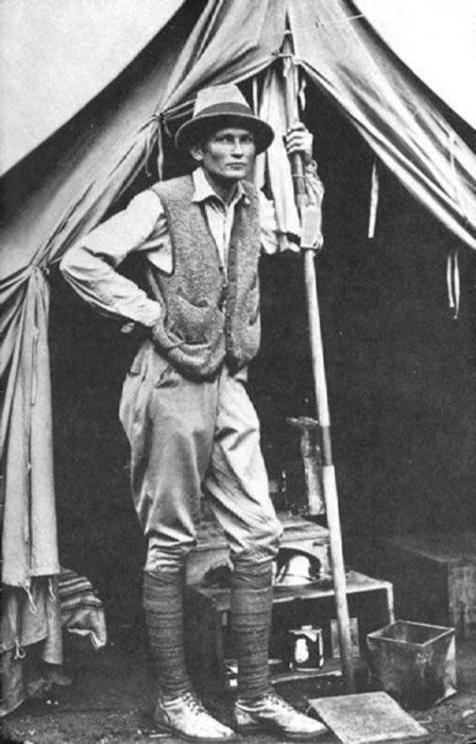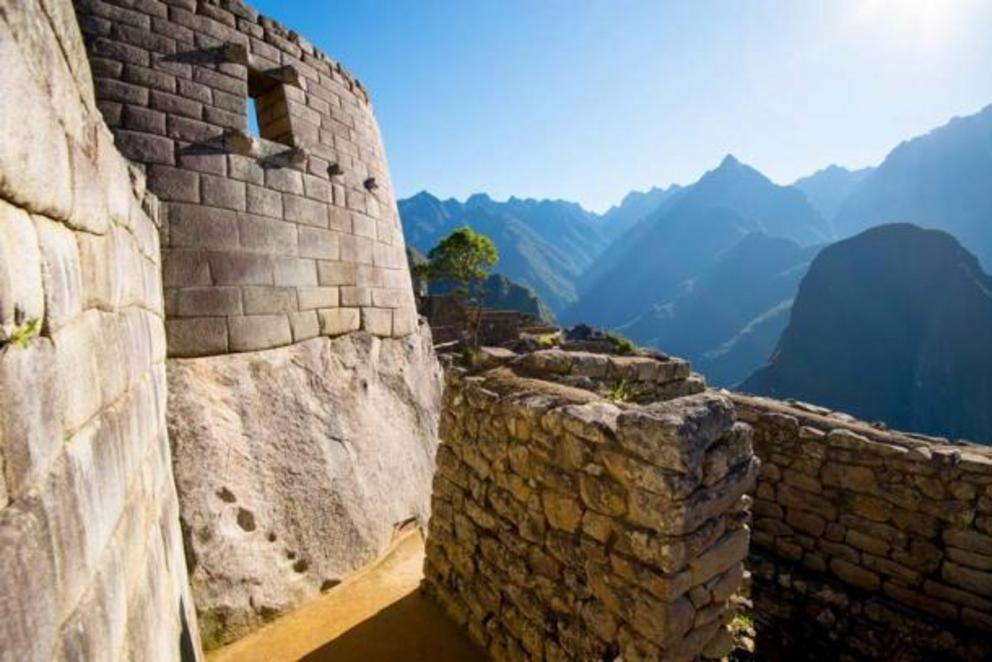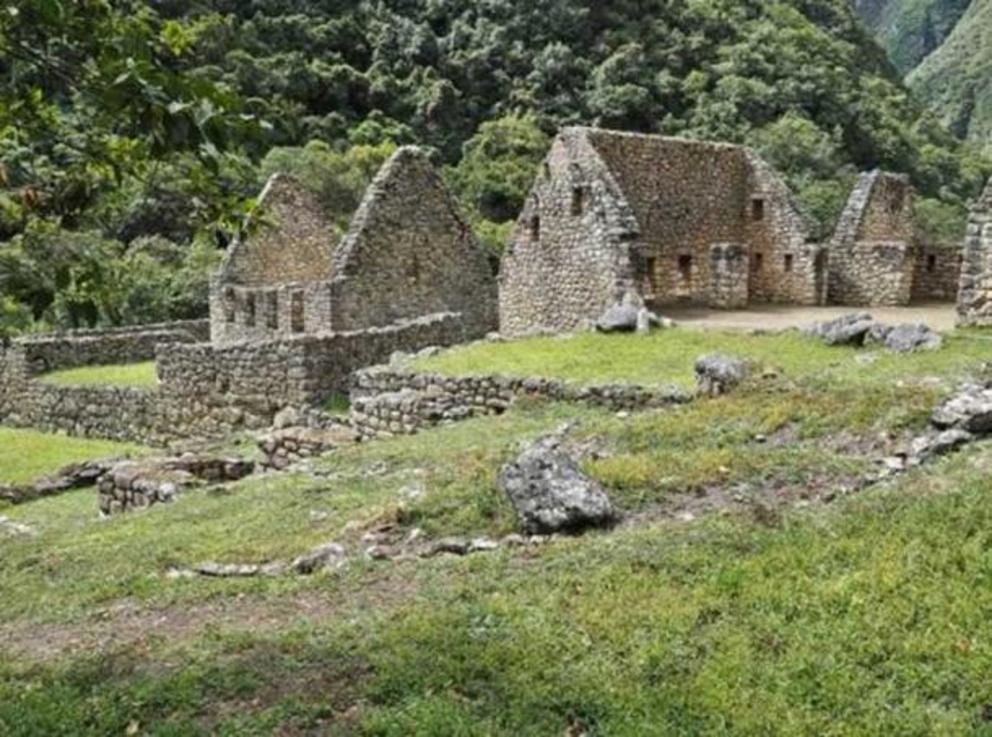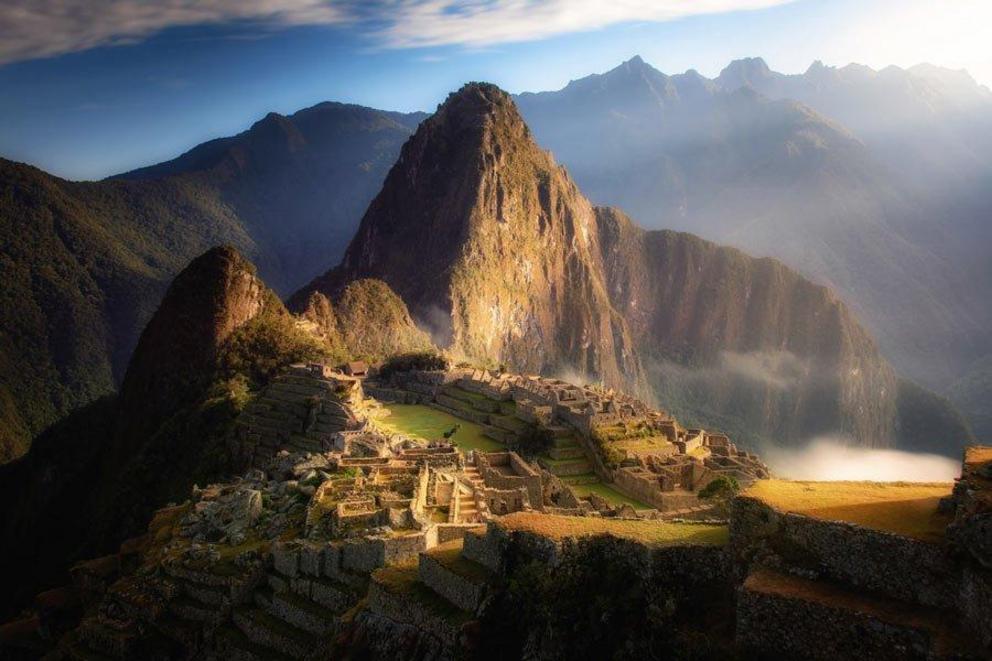The mysteries of Machu Picchu and archaeological obsession
Top image: Machu Picchu.
Hidden away within the Andes, 2,430 meters (7,972 ft) above sea level, the Inca site of Machu Picchu near Cusco in Peru is often referred to as the lost city of the Incas. These days you couldn’t claim it’s still lost. With over one and a half million tourists visiting in 2018 (pre-pandemic), it is a popular tourist destination which was voted one of the New Seven Wonders of the World back in 2007.
 Hiram Bingham at his tent door near Machu Picchu in 1912.
Hiram Bingham at his tent door near Machu Picchu in 1912.
The “Discovery” of Machu Picchu
The ruins of Machu Picchu , which means “Old Mountain”, were re-discovered on the 24th July 1911 by the American explorer and Yale archaeologist Hiram Bingham after having been abandoned for 400 years. While he has taken the credit for what is deemed one of the greatest archaeological finds of the 20th century, it was actually the locals who led him there, having been using the site for growing crops. Bingham was however the first to conduct excavations at Machu Picchu, leaving a plethora of information, documents, maps and photographs for posterity.
Although it was discovered over 100 years ago, it is still a hotbed of academic controversy, with archaeologists and historians continuing to debate its origins. The news is frequently filled with new studies and excavations, as more than one generation of archaeologists continue to be inspired by its legend.
An old Incan trail leads its way through the mountains to the city of Machu Picchu . Archaeologists believe that the site was built in approximately 1400 AD by King Pachacuti, only to abandon the city with the arrival of the Spanish. However, local legends denote that Machu Picchu was a sacred place built far earlier than that. Therefore, it is not exactly clear why it was built, by whom, or how.
 Temple of the Sun at Machu Picchu.
Temple of the Sun at Machu Picchu.
The Greatest Archaeological Find of the 20th Century
Machu Picchu is a city comprised of more than 200 buildings, temples, houses, pathways, fountains and altars all cut from grey granite from the mountain top. There is no evidence of any fortified walls, which means that it was not a fortress. Many of the stone blocks weigh more than 50 tons (45 metric tons), and all are cut and fitted together without the use of mortar and in such a precise manner that it raises incredulity as to how the ancient Incas were able to build such a monumental place.
Archaeologists hypothesize on why Machu Picchu was built. One of the suggestions is that it was created as an astronomical observatory . A specific stone at the highest part of the site, known as the Intihuatana stone, was used to indicate with accuracy the two equinoxes, as well as other celestial events. Local shamanic legends refer to this stone as a gateway to the spirit world, the idea being that the person who touched the stone with his forehead would open a vision to the spirit world.
Other main buildings inside the city of Machu Picchu are the Temple of the Moon, the Temple of the Sun, and the Room of the Three Windows. Unfortunately, there are no written clues or carvings in Machu Picchu proving that this was the only purpose of the site.
 A ceremonial sector at the Chachabamba site.
A ceremonial sector at the Chachabamba site.
Unearthing New Information About Machu Picchu
Back in 2011, the archaeologist Thierry Jamin joined forces with a French engineer called David Crespy, who during a visit to Machu Picchu in 2010 noticed a door-like feature amongst the ruins. On closer inspection they decided to request permission from the Ministry of Culture to conduct a geophysical survey using electromagnetic conductivity instruments.
Forbes reported that their work seemingly confirmed that there were several rooms hidden under the ruins, which their results led them to believe were filled with metal, gold and silver. Having requested permission to open the “door”, which they hypothesized was the tomb of Pachacuti, their requests were denied by the authorities. According to National Geographic , David Ugarte, Director of the Regional Institute of Culture in Cuzco, stated that there was not enough evidence to warrant an archeological expedition based on the “intuition of these treasure hunters.”
This research isn’t the only surprising work to be happening in relation to Machu Picchu . A study conducted by Yale archaeologist Richard Burger, and published in the journal Antiquity in 2021, used cutting-edge radiocarbon dating on human remains from Machu Picchu (accelerator mass spectrometry) to conclude that the site was “at least 20 years older than the accepted historical record suggests.” Keeping in mind that established time line is based on accounts written by the invading Spanish, thanks to this new evidence it would appear that Pachacuti actually rose to prominence earlier than previously thought.
Advances in technology, such as lasers and drones, are allowing archaeologists to make new discoveries more frequently. In 2022, the Journal of Archaeological Science published information about research into Chachabamba, a ceremonial site just outside Machu Picchu. First discovered in 1941, this new technology has helped archaeologists from the University of Warsaw’s Center for Andean Studies uncover ruins which had remained hidden nearby within the forest.
This new research has helped the team to understand the role of these stone built terraces, baths and water channels, and how they were used by the Inca civilization. According to Dominika Sieczkowska from the University of Warsaw, quoted in NBC News , visitors to Machu Picchu “had to stop in Chachabamba for a spiritual bath to be clean and pure to get to Machu Picchu.”
More than a century after archaeological explorations began in Machu Picchu , the ancient Inca ruins are still revealing their secrets. As technology advances and professionals ask new and more profound questions, we are getting closer to understanding the history of Peru’s most attractive destination.
For full references please use source link below.

